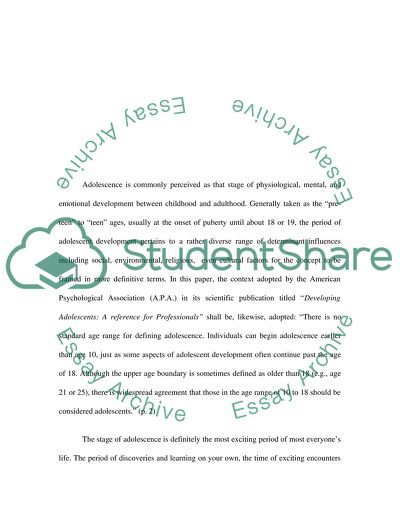Cite this document
(Adolescents not in Turmoil Assignment Example | Topics and Well Written Essays - 1750 words, n.d.)
Adolescents not in Turmoil Assignment Example | Topics and Well Written Essays - 1750 words. Retrieved from https://studentshare.org/sociology/1549559-adolescents-are-not-in-turmoilnot-deeply-disturbed-and-not-resistant-to-parental-values
Adolescents not in Turmoil Assignment Example | Topics and Well Written Essays - 1750 words. Retrieved from https://studentshare.org/sociology/1549559-adolescents-are-not-in-turmoilnot-deeply-disturbed-and-not-resistant-to-parental-values
(Adolescents Not in Turmoil Assignment Example | Topics and Well Written Essays - 1750 Words)
Adolescents Not in Turmoil Assignment Example | Topics and Well Written Essays - 1750 Words. https://studentshare.org/sociology/1549559-adolescents-are-not-in-turmoilnot-deeply-disturbed-and-not-resistant-to-parental-values.
Adolescents Not in Turmoil Assignment Example | Topics and Well Written Essays - 1750 Words. https://studentshare.org/sociology/1549559-adolescents-are-not-in-turmoilnot-deeply-disturbed-and-not-resistant-to-parental-values.
“Adolescents Not in Turmoil Assignment Example | Topics and Well Written Essays - 1750 Words”, n.d. https://studentshare.org/sociology/1549559-adolescents-are-not-in-turmoilnot-deeply-disturbed-and-not-resistant-to-parental-values.


